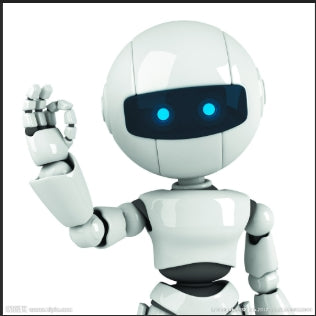
Top 5 NEW Humanoid Robots
1.Figure 2
Figure 2 is a cutting-edge robotic platform designed for a variety of applications, from industrial automation to research and development. With its sleek, humanoid-like form, it combines advanced mobility, dexterity, and precision to perform tasks in environments ranging from manufacturing floors to complex research labs. Equipped with state-of-the-art sensors, Figure 2 can navigate autonomously, interact with its surroundings, and even collaborate with human operators. The robot’s ability to adapt to different tasks—whether it’s picking up objects, assembling components, or assisting in laboratory experiments—demonstrates its versatility. Its AI-driven software allows for continuous learning and improvement, making Figure 2 an invaluable tool in industries looking to enhance productivity, safety, and innovation. As robots like Figure 2 continue to evolve, their potential to transform industries and society becomes more apparent, driving the future of automation and human-robot collaboration.
2.GR2
The GR2 robot is a state-of-the-art quadruped robot designed for a wide range of applications, from industrial inspection to research and development in robotics. Developed by a leading robotics company, it features advanced AI algorithms and a robust mechanical structure, allowing it to navigate complex terrains with high precision and stability. The robot is equipped with sensors for real-time environmental awareness, making it capable of performing tasks such as surveillance, mapping, and remote monitoring. With its versatile design and exceptional agility, the GR2 is ideal for use in hazardous environments, such as disaster zones or industrial sites. It is also increasingly being explored for use in the field of autonomous transportation and logistics. The GR2 represents the future of robotics, offering a glimpse into how quadruped robots can integrate into everyday workflows and contribute to a wide range of industries.
3.1X Neo
The 1X Neo Robot is a versatile, cutting-edge robot designed for various applications, including research, entertainment, and commercial use. Equipped with advanced sensors, AI algorithms, and high-precision motors, the 1X Neo is capable of dynamic movements, obstacle avoidance, and human interaction. Its modular design allows for customization, making it suitable for a wide range of industries, such as logistics, education, and healthcare. The robot's sleek appearance and user-friendly interface make it both functional and approachable for users with varying technical expertise. The 1X Neo is also designed with long-lasting battery life and efficient energy consumption, making it ideal for continuous operations. With its ability to adapt to different environments and perform a variety of tasks, the 1X Neo represents the future of robotics, combining advanced technology with practical applications.
4.Atlas
Boston Dynamics’ new Atlas robot is a highly advanced bipedal humanoid designed to navigate complex environments with remarkable agility. Building on its predecessor, the latest iteration of Atlas showcases enhanced mobility, including dynamic running, jumping, and even performing parkour-style movements. The robot is equipped with advanced perception systems, enabling it to maintain balance and adjust to its surroundings in real-time. Atlas is powered by machine learning and sophisticated control algorithms, allowing it to perform tasks such as lifting, carrying, and interacting with objects. Although primarily a research platform, Atlas has vast potential applications in fields such as disaster response, logistics, and industrial automation. Its development is part of Boston Dynamics’ ongoing efforts to push the boundaries of robotic capabilities, making it a significant step toward creating versatile robots that can perform tasks in unpredictable environments.
5.Astrobot S1
The Astrobot S1 is a cutting-edge humanoid robot developed by Astrobotic Technology, designed primarily for space exploration tasks. Equipped with advanced AI and robotics systems, the S1 is engineered to assist astronauts in challenging environments, both on Earth and in space. It can perform a variety of tasks, such as maintenance, scientific research, and logistical support, making it a valuable asset for space missions. With its dexterous arms, advanced sensors, and mobility features, the S1 can operate in low-gravity environments, as well as perform precise actions like assembling equipment or conducting experiments. Its AI-driven systems enable autonomous decision-making and adaptation to dynamic environments, allowing it to collaborate with human crews and enhance mission efficiency. The Astrobot S1 represents a significant step toward developing autonomous robots capable of supporting deep-space exploration and human presence on other planets.








